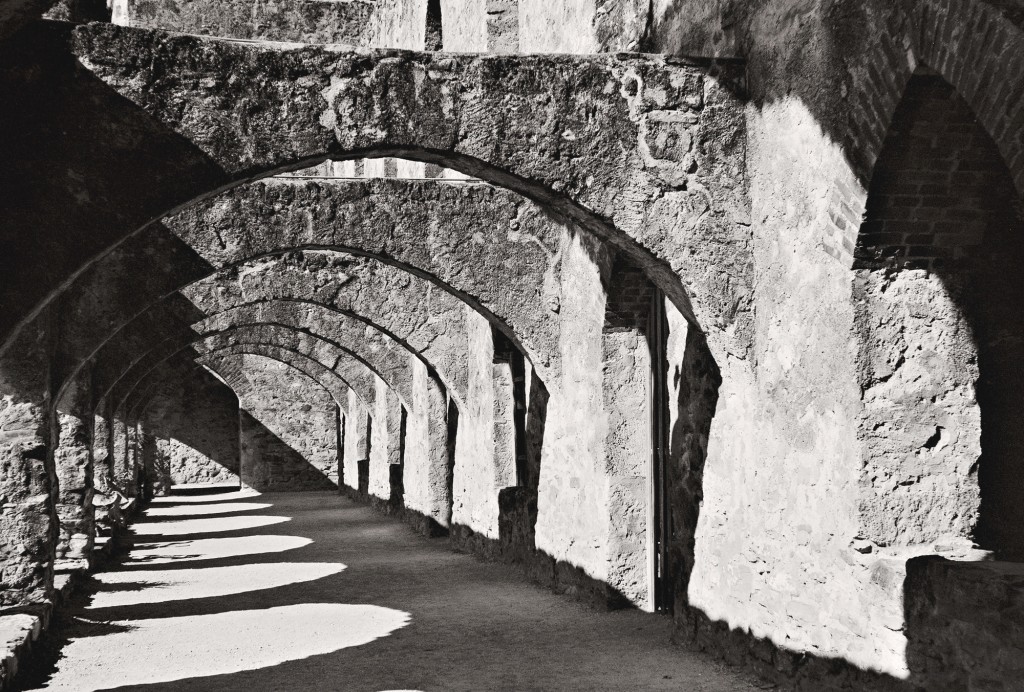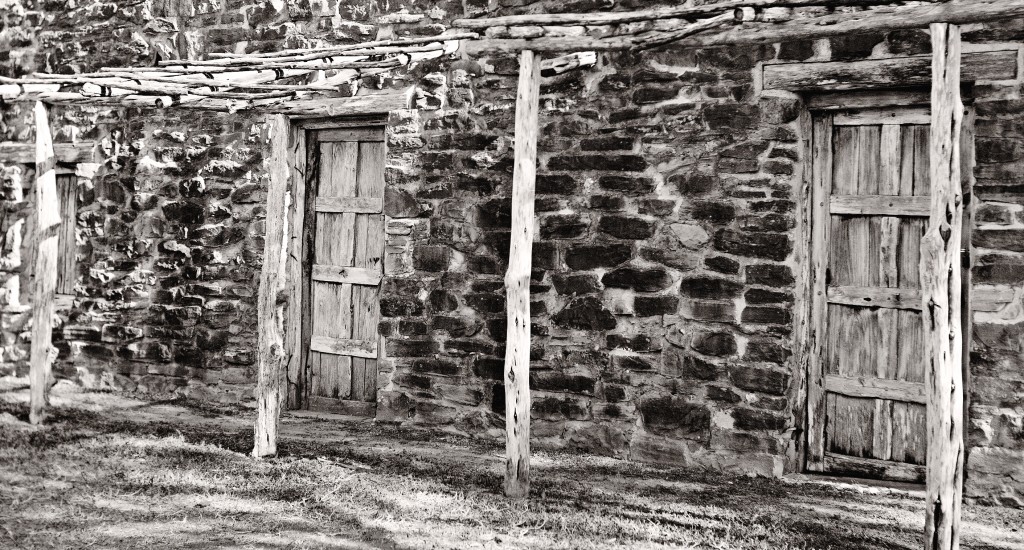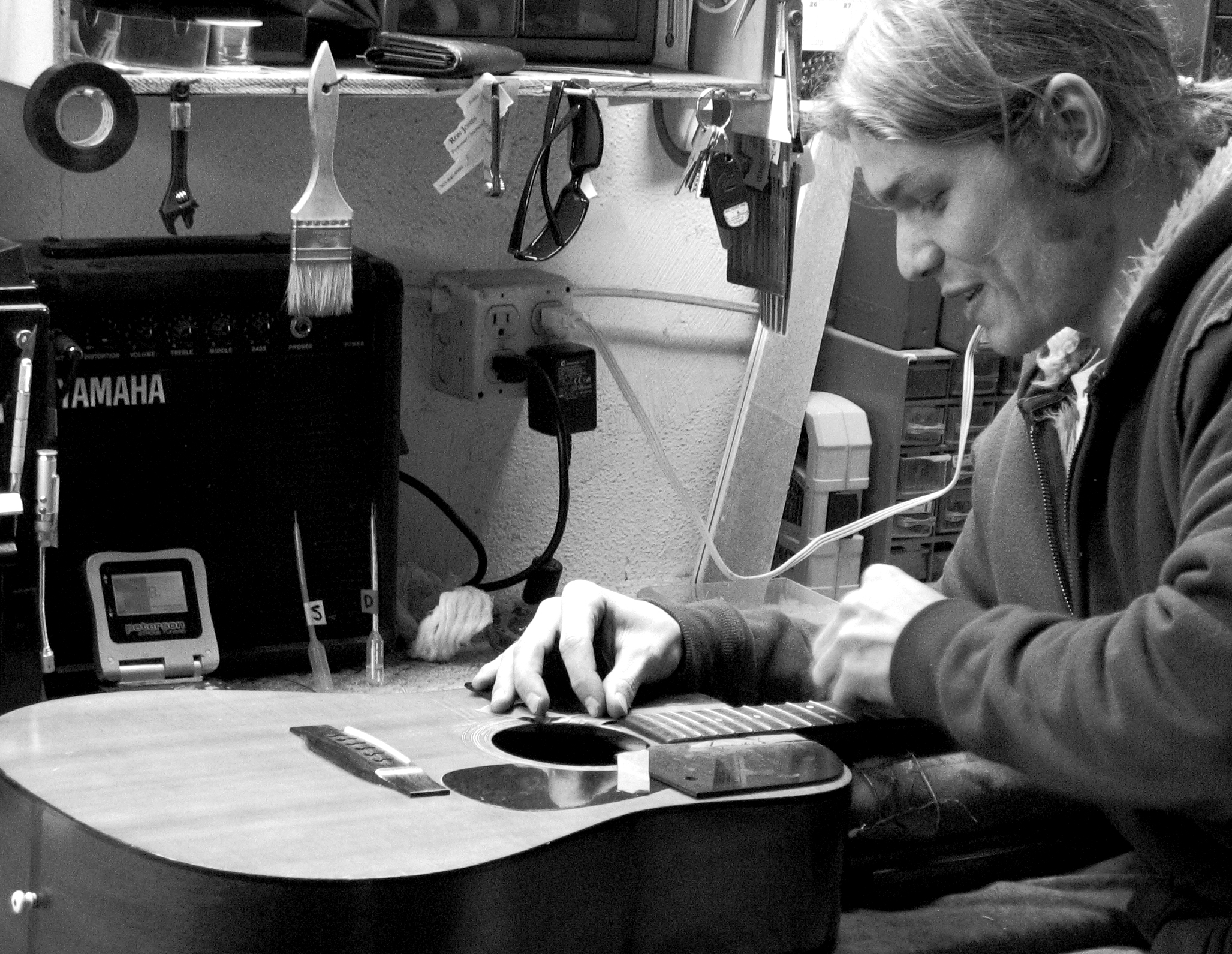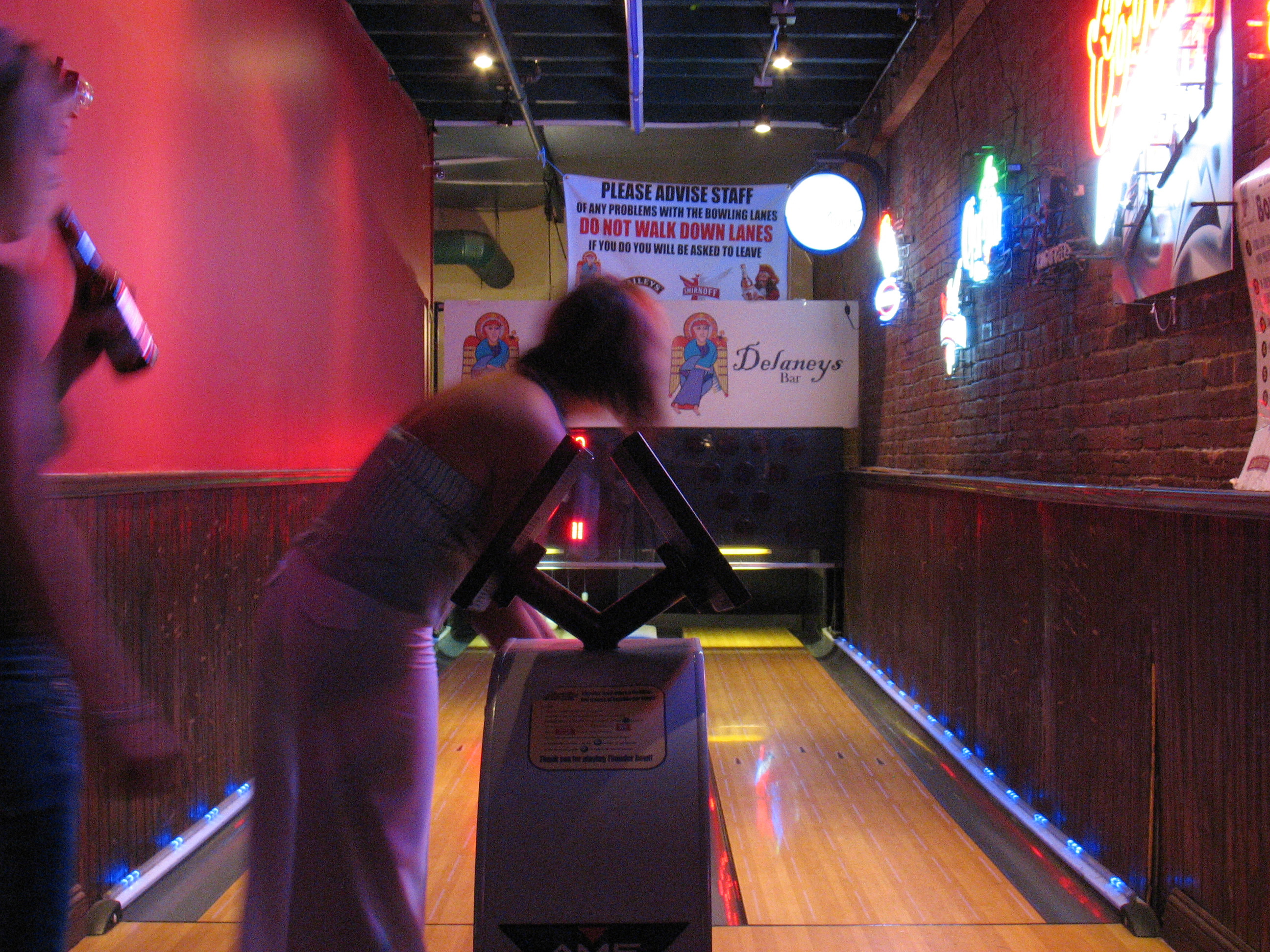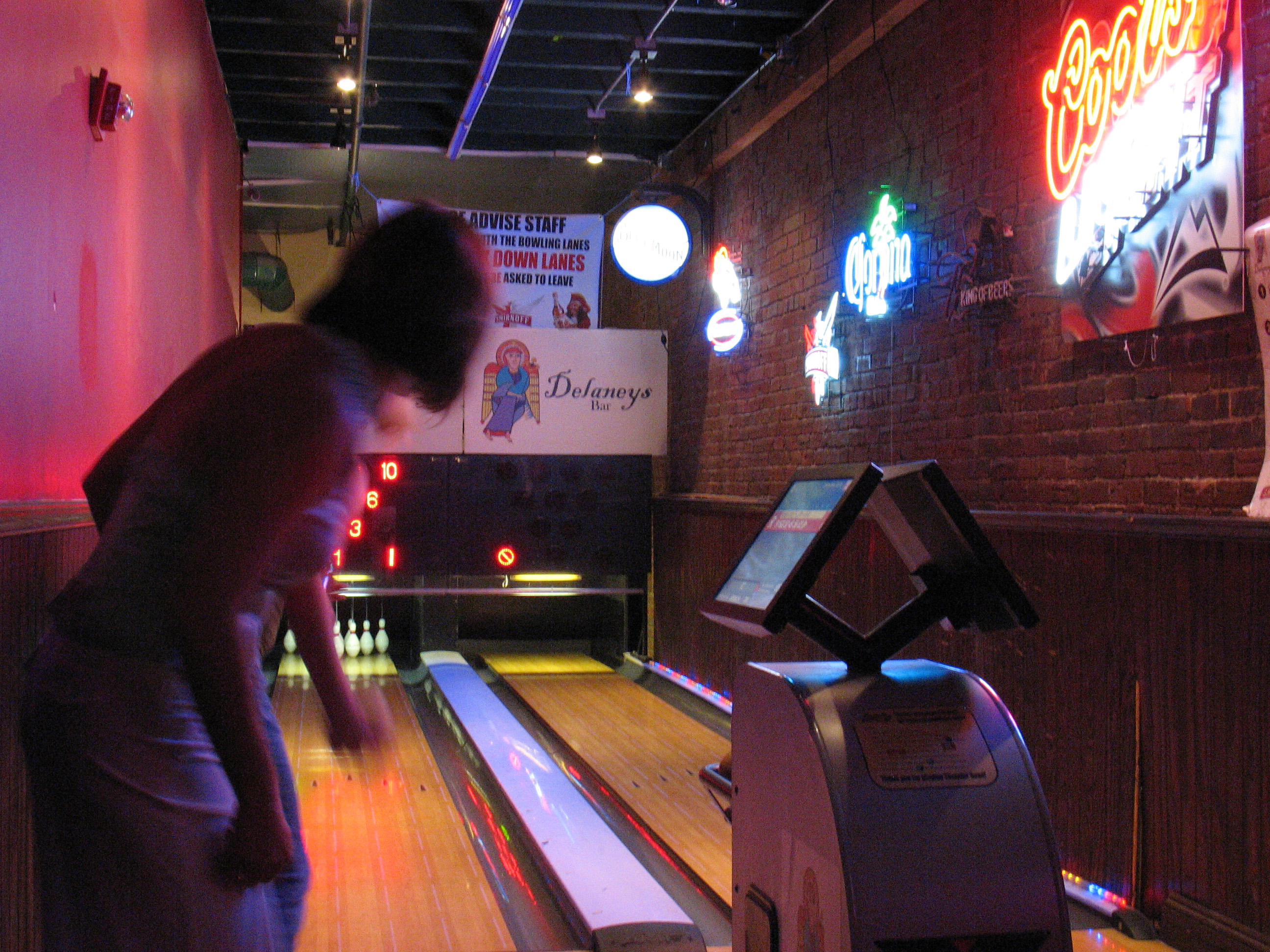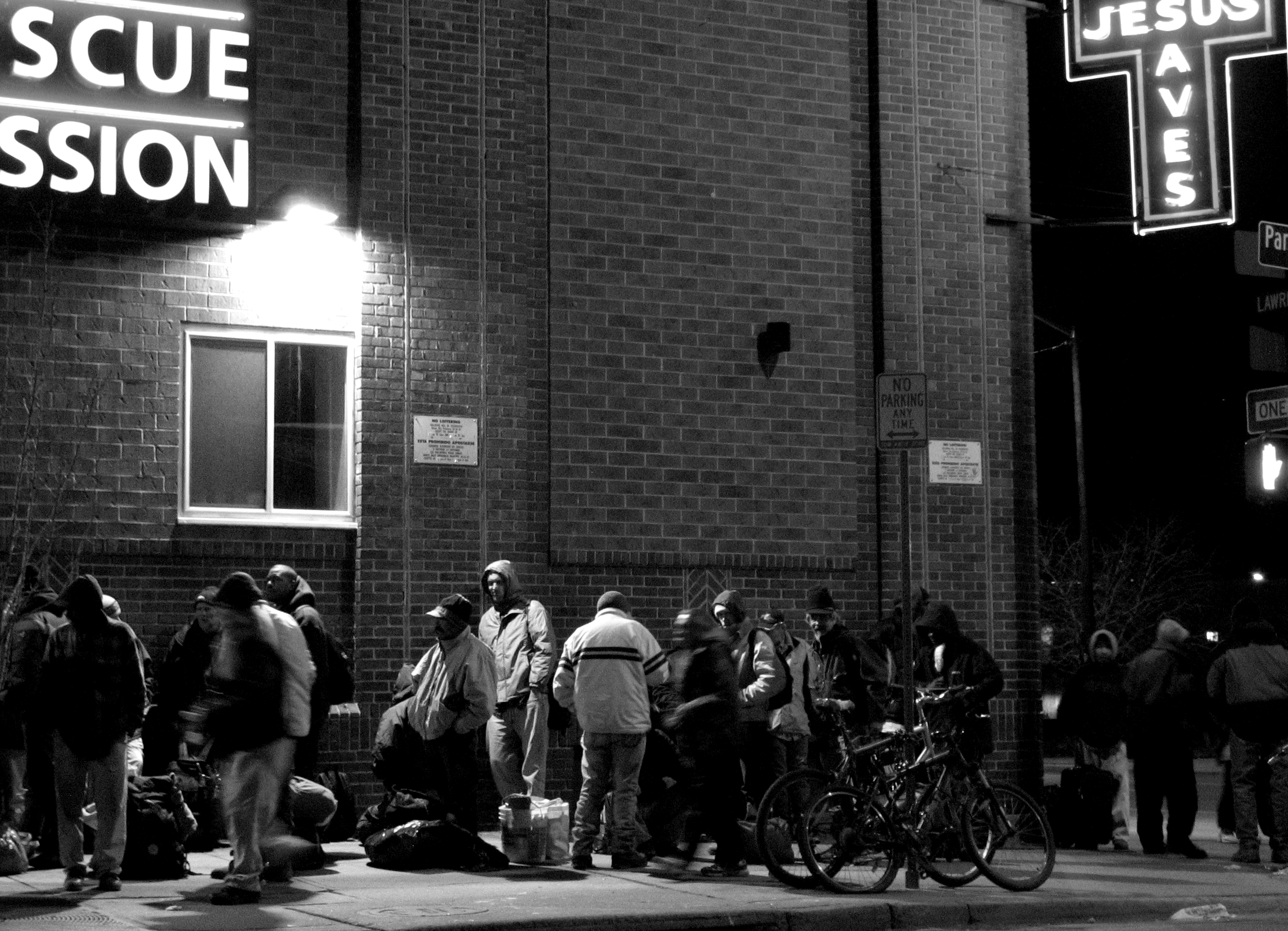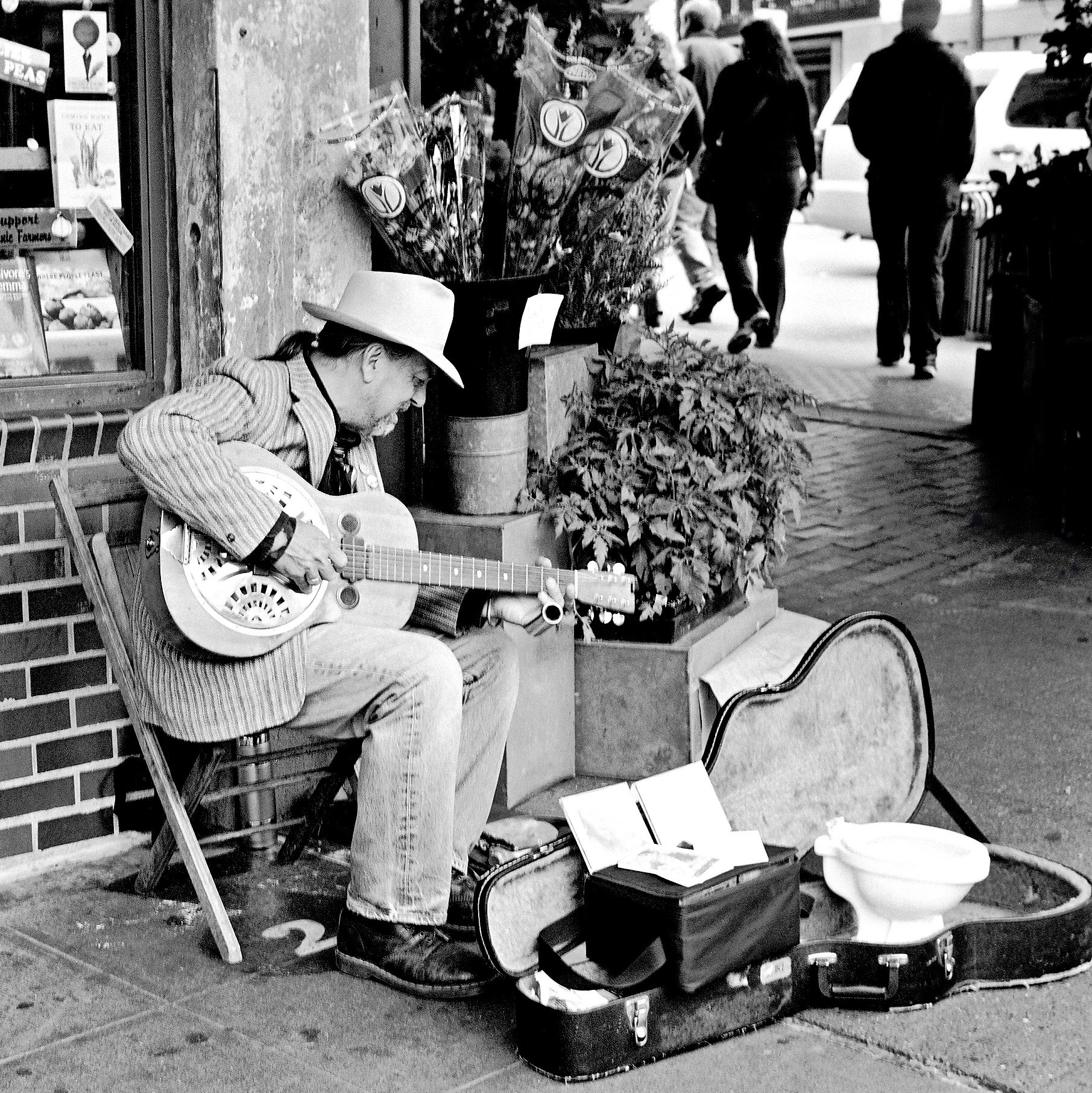This is quite a different view of Mission San Jose from Mission San Jose at Midnight. After wandering the grounds at in the depths of the night, I returned at midday to explore the wonderfully-preserved (and still active) chapel and walled grounds. Normally, one avoids the harsh noonday sun, with its dense shadows and color-bleaching light, but in this setting, the heat and light which had bathed this old mission for centuries seemed appropriate. I was struck by the interplay of light and shadow with the weathered stone and curving arches of this corridor, and captured it with the 1914 Kodak at f/22 on XP-2.
Later, I wandered the grounds and found these weathered doors with their grey pole shades that may once have been covered with grape arbors:
Once again, this image was taken with the 1914 Kodak with its Rapid Rectilinear Lens. The camera is now 97 years old, and the lens design, first introduced by Dallmeyer in 1866, has been capturing wonderfully sharp images for 135 years. Taken at f/22 on XP-2.
